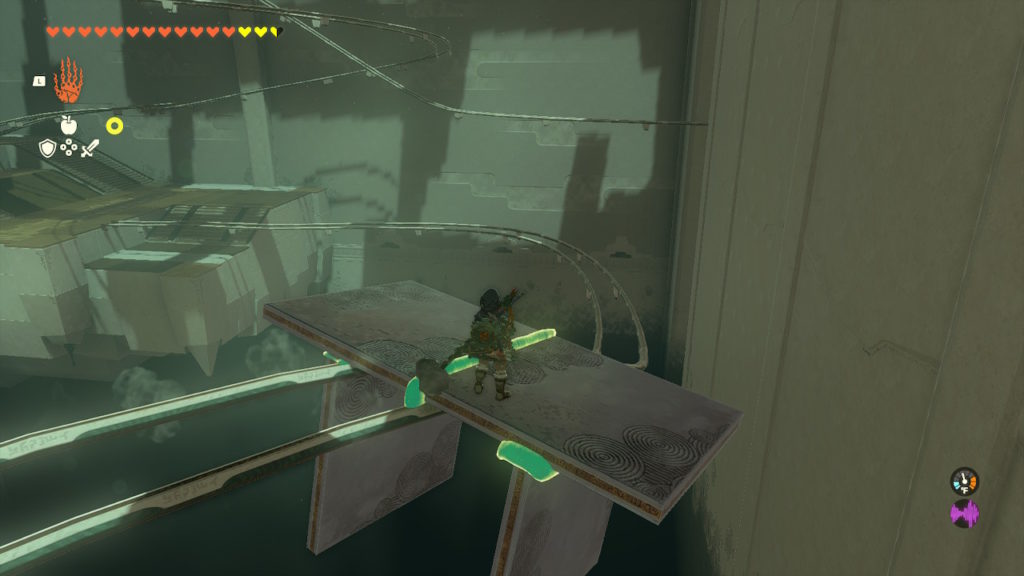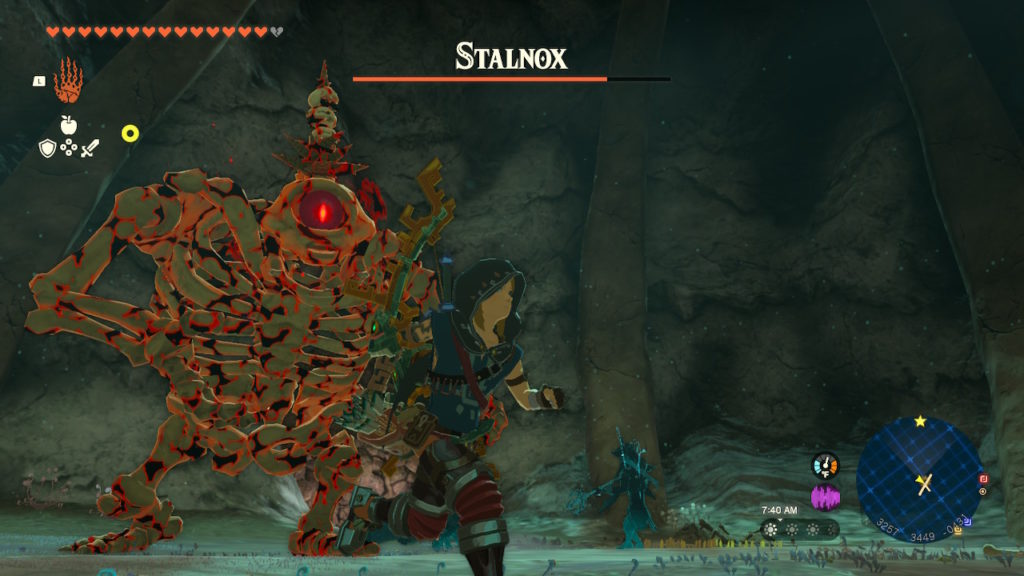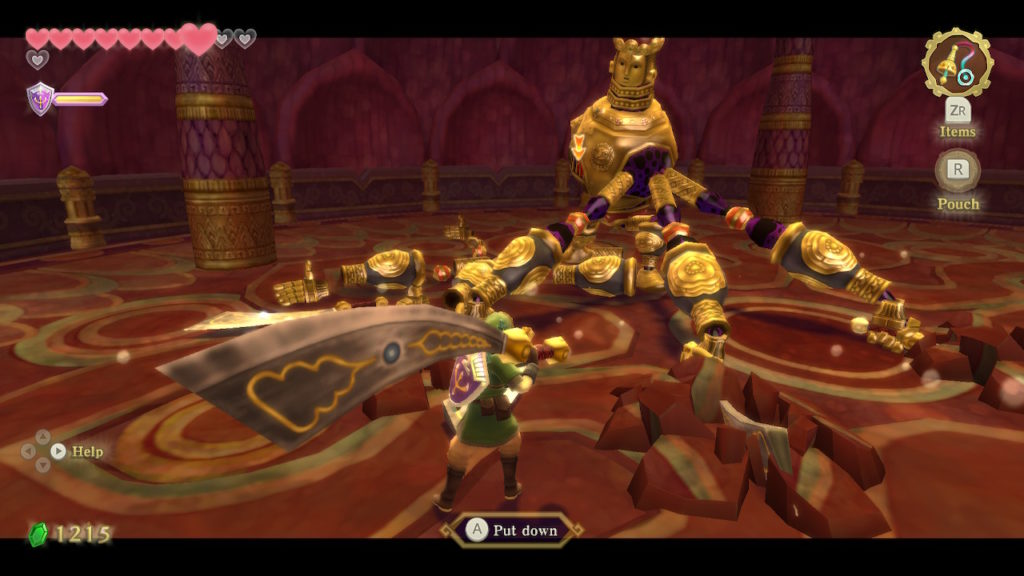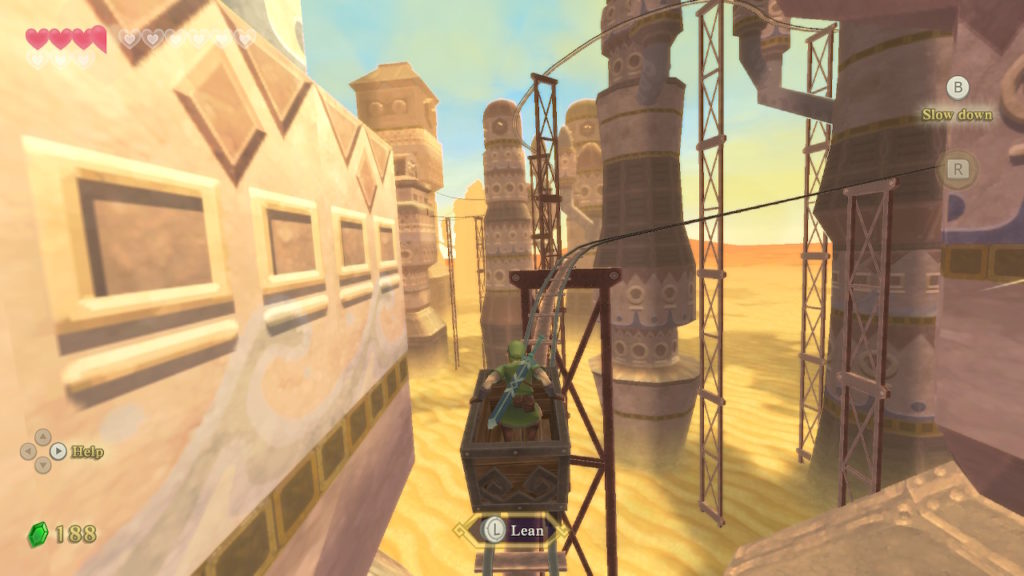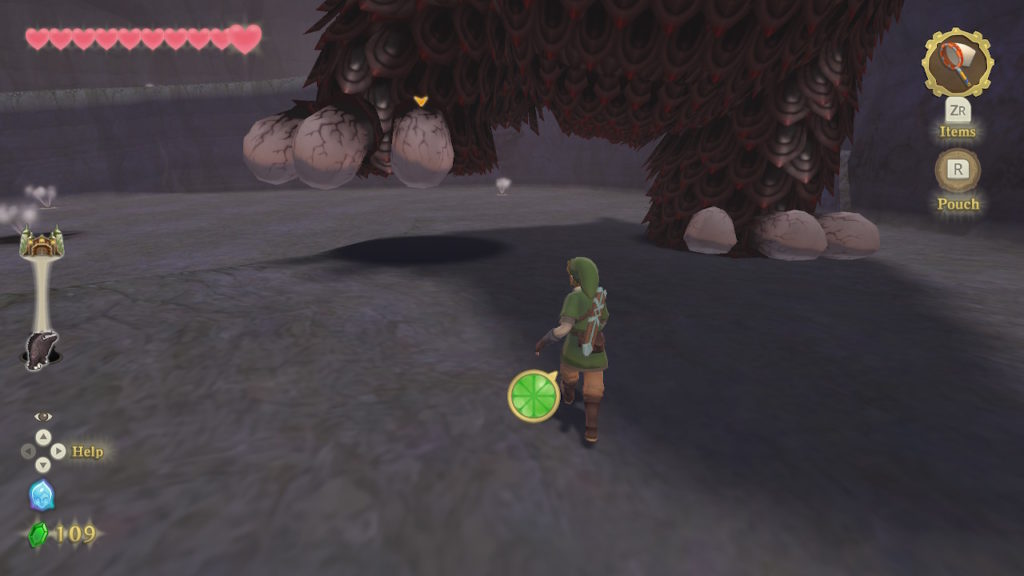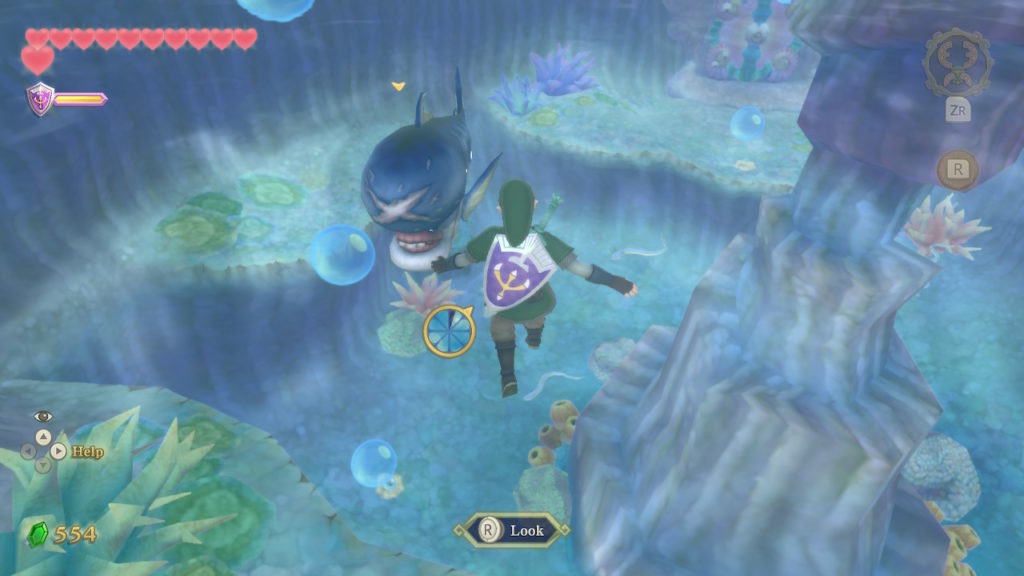- Genre: Action/Adventure
- Platform: Switch
The big thing that came out of the pre-release press for this was obviously that you get to play as Zelda for a change. However, beyond it being set dressing that didn’t really make a huge difference to the feel of the game. What did was the core hook for the game – that instead of swinging a sword around (technically, kinda sorta….) you get to make copies of things that do the fighting for you. What you end up getting out of that is a 2D Zelda that feels like it’s Link’s Awakening by way of Tears of the Kingdom, and boy is it a lot of fun.
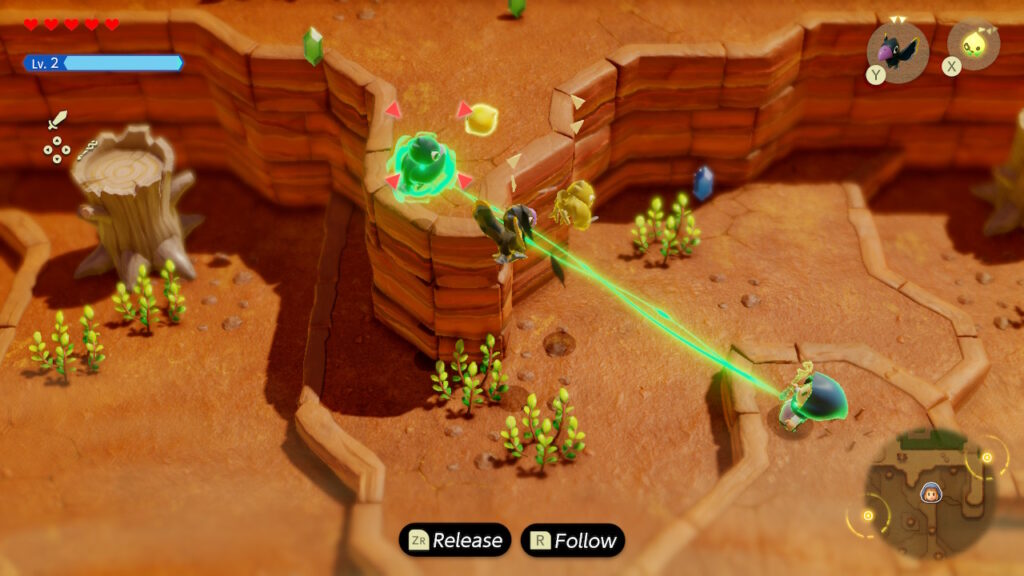
The thing that made this game work for me so well was the little moments. It’s the same thing that really worked for me about Breath of the Wild and Tears of the Kingdom. Sure, the core loop is still fun and classic Zelda – go to a general location, puzzle your way through a dungeon, get a heart container and a shiny upgrade – but the little moments within that are magic.
That screenshot up there is one of those moments for me. You gain nearly immediate access to spawn echoes – copies of things you’ve found or defeated in the world – so my initial instinct for combat was “lol army of bats”. And that is a perfectly valid way to play the game. However, you get to flying things that bats are simply not good against; they’re simply too fast. One of the other powers that you get is the ability to lock onto objects that move and pull or follow them around. They don’t explicitly teach you use it as a combat mechanic, but in typical confounding Nintendo fashion they put the mechanic in front of you so often that eventually it just clicks. I ran into these birds and they were just obnoxious to me because they were fast and swarming, so I locked one down to just stop it for a breather. That’s when the light bulb went off. Lock it down and send an army of whatever after it since it can’t move. And it just works.
Those little moments happen all over. Large gap that you need to clear but is too far to jump? Well, you can use an echo of a classic 2D Zelda flying tile. Or you can build a bridge of beds. Or you can grab a bird echo and float over the gap. Or you can make a chain of spider echoes and climb on their webs. Or you can create a chain of water blocks to swim across it. Swarm of enemies about to attack hiding in grass? Well, you can use your Link transformation and fight them directly. Or you can send a pack of wolves to fight them. Or you can set the grass on fire to kill them. Or you can trap them in water blocks and drown them. Or you can create an elevator block and simply go over the top of them. Need to move a block onto a switch behind a fence? Well, you can use your attachment power and push it along. Or you can use a fan to move it. Or you can create an unnecessarily complicated stack of objects to knock something else onto the switch. Or you can spawn an Armos to path onto it.
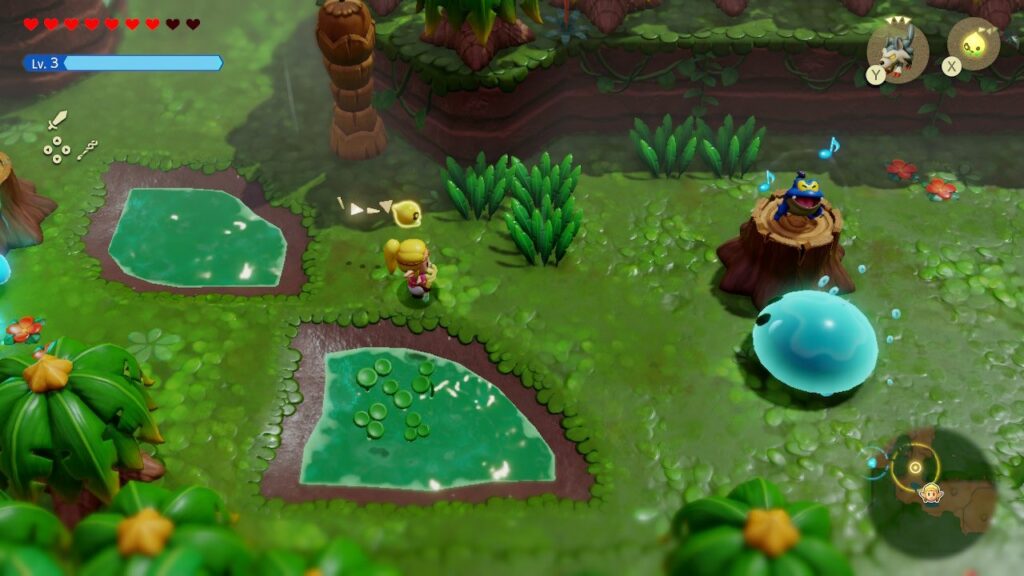
If this sounds very much like a “play it your way”, that’s because it is. What I ended up finding the most fun was nearly entirely avoiding using the Link copy powers and focusing entirely on spawning echoes in weird fashions to get through the game. Even on the last fight I went in this direction. My focus there was on spawning echoes to fight for me and avoiding damage, making the experience a defensive dance in minimizing health loss. The game is basically a tool set for you to screw around and find solutions where the end result as a player is laughing because your absurd idea actually worked. In that way, it feels exactly like the building toolset in Tears of the Kingdom.
However, all of these options really gets into what keeps this game in simply “very good” category than being truly great. The UX around selecting your echoes is miserable. The entire selection process is being presented with an enormous growing list of echoes, at least 75% of which are completely useless by end game, and a few basic sorting options (most used, recently used, recently found, category, ….and one I’m forgetting). Finding an echo you haven’t used in a while is a needle in a haystack and there’s really no reason this couldn’t have been at least minimized.
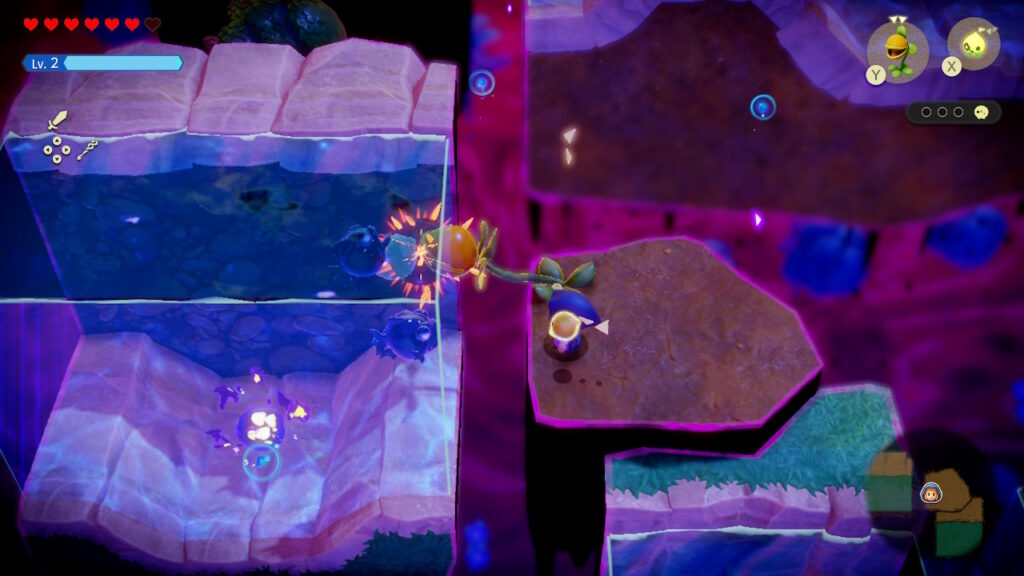
One option they could have taken? Simply reduce the list as the game went on. There’s a whole bunch of spots where you get level 1, 2, 3 variations of the same general monster (ex: Spear Moblin). When you first get the echo, it totally makes sense that they both exist as the newer one is stronger and costs more to spawn. However, one of the upgrades you get throughout the game reduces the spawn cost of specific echoes. Once the level N and N+1 match, there’s no reason that the lower one couldn’t simply be removed from the list entirely.
Another option they could have taken? JUST LET ME TURN OFF SOME ECHOES. There are just so many things you can spawn here, and a lot of them I never found a good way to work into my combat experience. I get that there would probably be some hesitancy that the player would turn off something important to progression, but at the same time Nintendo has shown in the past that they are incredibly capable of tutorializing important things in ways that remind the player that “hey this is important”. But 4 beds? I don’t need 4 beds. I don’t need the 8 or 9 types of moblins that I found. I certainly don’t need the 5 or 6 statues that I found beyond the one dungeon where they were a mechanic.
The game really just ultimately suffers a bit from too many choices that don’t have any impact, and cleaning that up would oddly enough have really elevated the experience, as digging through menus for the thing you want at any specific time is really a grating experience.
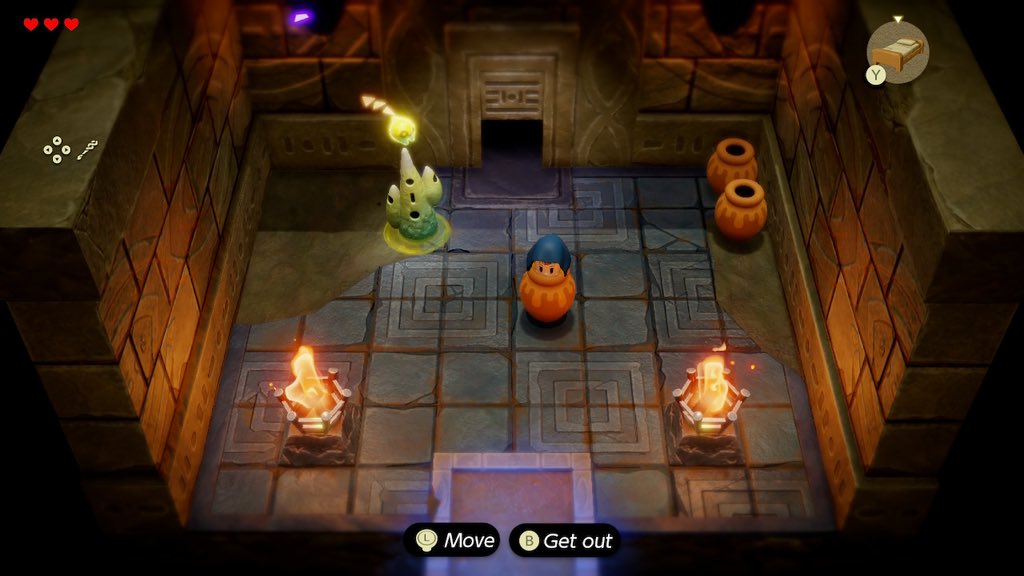
That said, the game was still an absolute joy. It’s both a path forward for the 2D entries in the series in terms of overall quality and a great title on its own. It shows that Zelda games can still be full of action without necessarily requiring a sword. It shows that there’s still legs in dungeon-focused experiences instead of an open world. I suppose it also shows that Zelda can be a star on her own, though I’ve never really been convinced that Link being the hero really matters beyond it being set dressing. It’s the perfect title for the Switch where it is in its life cycle, providing something high quality and experimental while we wait for the bigger next console to come out.


